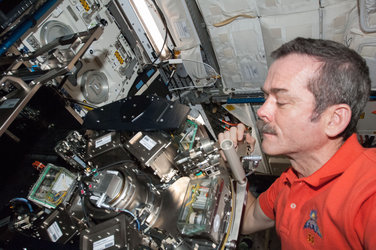

Artificial gravity for Europe in space
Many of us are familiar with movies like 2001: A Space Odyssey and Star Trek, where astronauts live and work on space stations or spaceships equipped with artificial gravity. Science fiction today shall become reality soon.
ESA Director General Josef Aschbacher and Vast CEO Max Haot signed a Memorandum of Understanding for future Vast space stations on Space Day at the Berlin International Airshow (ILA) on 6 June 2024.
Vast is developing commercial artificial gravity space stations that will support both crew and payloads, offering microgravity and lunar artificial gravity environments. Their Haven-1 single module station is set to launch to low Earth orbit no earlier than August 2025.
For now, astronauts float in a ‘weightless’ environment aboard the International Space Station, being in a state of constant freefall while orbiting around Earth. Although this allows for fun moments and is essential for scientific research, it also has significant downsides for astronauts' health on long-duration missions, causing the loss of bone and muscle mass, back pain, or headaches due to fluid shifts towards the head.
Artificial gravity on a space station could solve these problems. Vast aims to achieve artificial gravity through centrifugal forces generated by a large spinning structure in space, providing a pull that mimics the gravity our bodies are accustomed to.
The cooperation with Vast will give ESA and its Member States access to space for research and science in low Earth orbit (LEO) for the benefit of our planet as we transition from the International Space Station, set to resume operations in 2030.
The collaboration between Vast and ESA will open doors for ESA to use Vast space stations for astronaut missions and research, help European industries supply parts and certify docking, and involve European LEO cargo and crew transport services.





